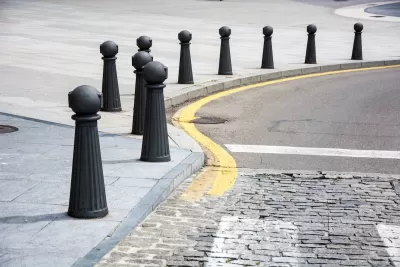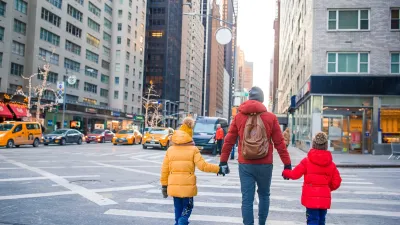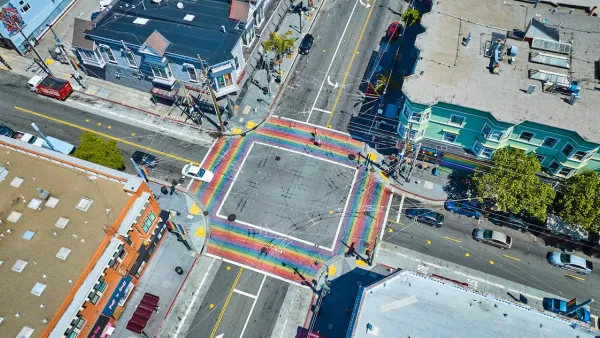Solid barriers, like the dormant ones in New Orleans, are commonly used to improve road safety in Europe. Why not here?

In an article for MinnPost, Bill Lindeke describes how simple yet effective solid bollards can help save lives — both in attacks like the one in New Orleans and in everyday occurrences.
According to Lindeke, “The standard bollard costs around $700 to manufacture and install (at least according to one estimate). That’s very affordable for a modern capital expense, which is probably one reason why they’re common in many European cities.” Retractable bollards are more expensive and require maintenance. Flexible delineators, the bollard’s less robust cousins, can provide traffic calming and clarity but do little to offer physical protection.
“Compared to anything you’ll find in a public works budget, in the right context they represent an amazing investment payoff for traffic calming and safety.” The value of bollards seems well understood by the private sector, Lindeke notes. “Companies that seem to know the actuarial value of their infrastructure deploy them more literally than urban planners.”
With vehicles growing larger and more dangerous, Lindeke writes that bollards would dramatically improve safety near bus stops, schools, and other populated public places. Using more bollards could also have the side effect of encouraging more street festivals and events — “important in an era where public gatherings are disappearing.”
FULL STORY: How the oft-forgotten urban pawn, the lowly bollard, can save lives

Planetizen Federal Action Tracker
A weekly monitor of how Trump’s orders and actions are impacting planners and planning in America.

Chicago’s Ghost Rails
Just beneath the surface of the modern city lie the remnants of its expansive early 20th-century streetcar system.

San Antonio and Austin are Fusing Into one Massive Megaregion
The region spanning the two central Texas cities is growing fast, posing challenges for local infrastructure and water supplies.

Since Zion's Shuttles Went Electric “The Smog is Gone”
Visitors to Zion National Park can enjoy the canyon via the nation’s first fully electric park shuttle system.

Trump Distributing DOT Safety Funds at 1/10 Rate of Biden
Funds for Safe Streets and other transportation safety and equity programs are being held up by administrative reviews and conflicts with the Trump administration’s priorities.

German Cities Subsidize Taxis for Women Amid Wave of Violence
Free or low-cost taxi rides can help women navigate cities more safely, but critics say the programs don't address the root causes of violence against women.
Urban Design for Planners 1: Software Tools
This six-course series explores essential urban design concepts using open source software and equips planners with the tools they need to participate fully in the urban design process.
Planning for Universal Design
Learn the tools for implementing Universal Design in planning regulations.
planning NEXT
Appalachian Highlands Housing Partners
Mpact (founded as Rail~Volution)
City of Camden Redevelopment Agency
City of Astoria
City of Portland
City of Laramie





























